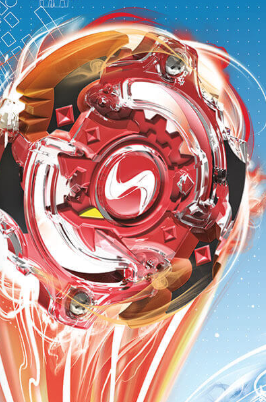More than one million viewers tune into Beyblade Metal Fusion on any given Saturday morning in America. Beyblade Metal Fusion is a Japanese manga TV series that entails a group of friends that form teams and “combats” one another with Beyblades (customized spinning tops). The show that has launched its second season during the fall of 2011 on Cartoon network is just one feature of the spinning-top cosmos.
How Many Beyblade Tops Are Available For Purchase?
According to Darryl Depriest, the vice president of the marketing department at Hasbro, they are going beyond the phenomenon which is imported from Japan. Even though the initial product is linked to the first season of this popular animated series, the toy manufacturer has created twenty-five different spinning tops that can be customized. According to Depriest, because there are so many various ways in which kids can play with the toys, is essential to establishing the brand’s prolonged existence.
A Popular Phenomenon
Beyblades are the latest accessories de rigueur for boys between the ages of eight and eleven on school playgrounds throughout the country. More than 15 million Beyblades which retailed at $10, and more were sold in 2010. In order to set up a proper battle, launching gear and a plastic Beyblade stadium are needed in addition to the spinning tops. You also have tournaments at each level, from regional play, which starts during late summer, to the national level, where winners were spoilt with a trip to Comic-Con New York during the World Beyblade Championships in 2012. During the world forum, a staggering twenty-two countries were competing, with the same time frames and levels of competition.
A Bit Of History
Beyblades had a preceding run in the United States, running from 2002 to 2005. The Hasbro brand marketed andsold the exact toys but were no successful with a long-term rollout. The vice president and managing director of Nelvana Enterprises, Colin Bohm, who deals with the distribution of the animated TV series, disclosed that the brand was more focused the second time around. During the second run, they had a more innovative-or-die perspective, with the Japanese theme in mind, but adding some Western flavor to it, he proclaims. During the initial iteration in 2003, Beyblade toys were forbidden in a European school due to parents and students reportedly getting injured. Apparently, the toys were discharged into the air instead of onto the ground. Depriest retaliated by saying if the toys are used and launched in the correct manner, they are safe to use. Hasbro and Nelvana started working hand in hand to promote these toys only. Kids can compete on Beyblade.com in online tournaments and continue customizing their tops. The site received 3.2 million visits worldwide during May of 2010 through November of 2010. These toys remain popular since they permit kids to remain actively engaged and staying for a prolonged time, according to the brand manager for Beyblade, Stephanie Zhuang. They certainly are not and in-and-out brand.





